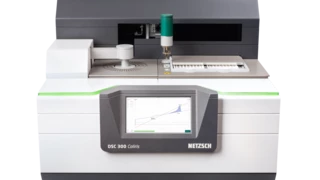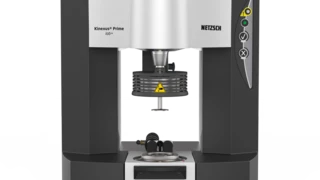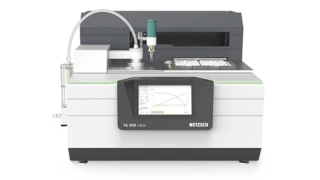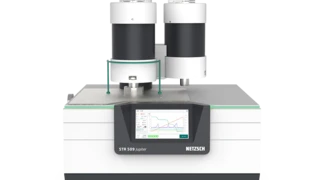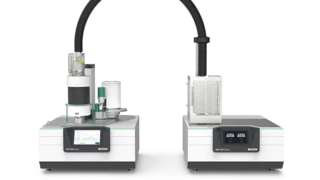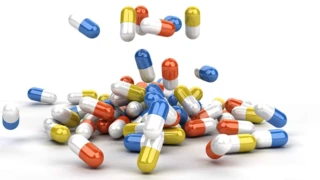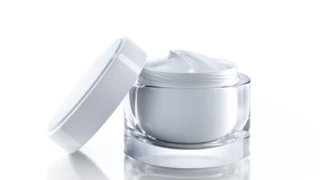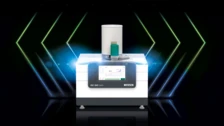Organics
Thermal Analysis and Rheology Solutions for the Analysis of Organic Matter
It sounds like a cliché but organic chemistry is all around us. It is defined as the study of the structure, properties, composition, reactions and preparation of carbon-containing compounds. Besides food, cosmetics and pharmaceuticals, it also applies to a lot of everyday products such as textiles, detergents, candles, dyestuff, paper, fertilizers, plastic goods, and insect repellents, as well as to many chemicals for industrial use.
MAKING OUR LIVES EASIER!
In the characterization of raw materials, development of new materials, design of synthesis pathways, optimization of manufacturing processes, implementation of safety assessments and verification of final product quality – in all these areas, Thermal Analysis instruments and Rheometers by NETZSCH are used and esteemed. They play an important role in both industry and science in fulfilling current and future requirements.
What Can You Achieve by Using Thermal Analysis Devices and/or Rheometers?
Characteristic physicochemical properties of organic substances as well as their changes during heating or cooling can be studied using various thermoanalytical techniques, amongst them Differential Scanning Calorimetry (DSC), Thermogravimetric Analysis (TGA), Simultaneous Thermal Analysis (STA), and Accelerating Rate Calorimetry (ARC)The method describing isothermal and adiabatic test procedures used to detect thermally exothermic decomposition reactions.Accelerating Rate Calorimetry (Accelerating Rate Calorimetry (ARC)The method describing isothermal and adiabatic test procedures used to detect thermally exothermic decomposition reactions.ARC®®). DSC identifies and determines the Glass Transition TemperatureThe glass transition is one of the most important properties of amorphous and semi-crystalline materials, e.g., inorganic glasses, amorphous metals, polymers, pharmaceuticals and food ingredients, etc., and describes the temperature region where the mechanical properties of the materials change from hard and brittle to more soft, deformable or rubbery.glass transition and/or Melting Temperatures and EnthalpiesThe enthalpy of fusion of a substance, also known as latent heat, is a measure of the energy input, typically heat, which is necessary to convert a substance from solid to liquid state. The melting point of a substance is the temperature at which it changes state from solid (crystalline) to liquid (isotropic melt).melting point of solid, semi-solid or liquid materials and can also be used for investigating reactions. The Thermal StabilityA material is thermally stable if it does not decompose under the influence of temperature. One way to determine the thermal stability of a substance is to use a TGA (thermogravimetric analyzer). thermal stability of substances are studied by means of TGA. STA combines DSC and TGA capabilities in one device. Accelerating Rate Calorimetry (ARC)The method describing isothermal and adiabatic test procedures used to detect thermally exothermic decomposition reactions.Accelerating Rate Calorimetry (Accelerating Rate Calorimetry (ARC)The method describing isothermal and adiabatic test procedures used to detect thermally exothermic decomposition reactions.ARC®®) instruments identify chemical hazards and simulate Worst-Case ScenarioRelated to a chemical reactor, a worst-case scenario is the situation where temperature and/or pressure production caused by the reaction runs out of control.worst-case scenarios, which may potentially occur anywhere along the process from the storage of raw materials to production.
Determination of the rheological behavior of individual components and of final products goes far beyond flow curves and viscosity. Viscoelastic properties, yield StressStress is defined as a level of force applied on a sample with a well-defined cross section. (Stress = force/area). Samples having a circular or rectangular cross section can be compressed or stretched. Elastic materials like rubber can be stretched up to 5 to 10 times their original length.stress, gelation properties, and flow properties of liquids, semi-solids and powders under relevant shear rates are examples of rheological application in the organics field. Together, the Kinexus rotational rheometer and the Rosand high-pressure capillary rheometer cover the broadest shear rate range available on the market, and are indispensable in research, development and quality control.

